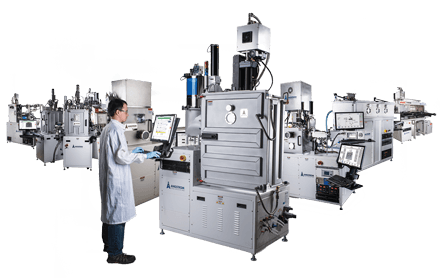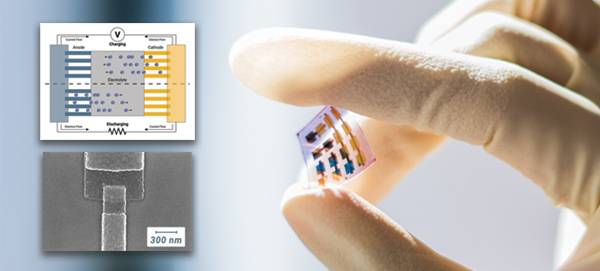Ion-Assisted E-Beam
During ion assisted e-beam evaporation, a beam of ions – typically argon – with a broad range of energies, is directed to the substrate and arrives alongside the material to be deposited. These ions impart energy into the evaporant atoms, leading to greater surface mobility. Increasing the arrival energy and surface mobility can improve the adhesion, density, and grain structure of the deposited film.

For dielectric materials, such as those deposited in optical coating applications, these film improvements also lead to a more reproducible refractive index. When depositing oxides or nitrides, oxygen and nitrogen ions can also be incorporated to the beam to provide a dual ‘react-assist’ process capability.
Ion assisted e-beam evaporation is typically accomplished using an end-hall style ion source which provides uniform substrate coverage and control over the energy and current of the beam. To ensure a fully ‘assisted’ process, the beam must provide an ion-to-atom arrival ratio that satisfies the empirically determined dosing for a given deposition material. In practice, this means that the ion source must be configured based on the material and deposition rate for a given process. Another benefit of an end-hall ion source in an electron beam evaporation system is the ability to pre-clean, etch, or oxidize the substrate prior to deposition.
Angstrom Engineering is as close to an ‘easy button’ for PVD as one can get.
Tony Novembre – Associate Director of PRISM – Princeton University
The most efficient way to determine your needs is to speak with one of our application specialists.
Let’s discuss it.
We look forward to finding the right solution for you.







